Julie Schott Made Pimples Cool. Now She’s Coming for Contraception.
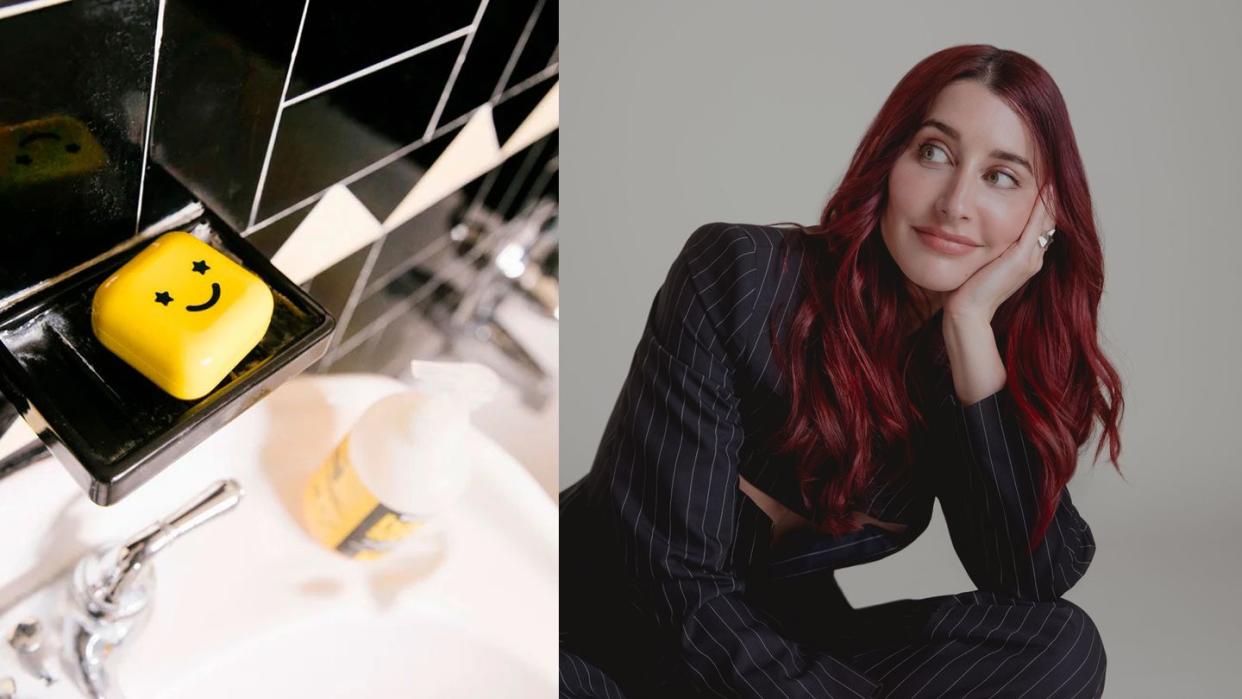
"Hearst Magazines and Yahoo may earn commission or revenue on some items through these links."
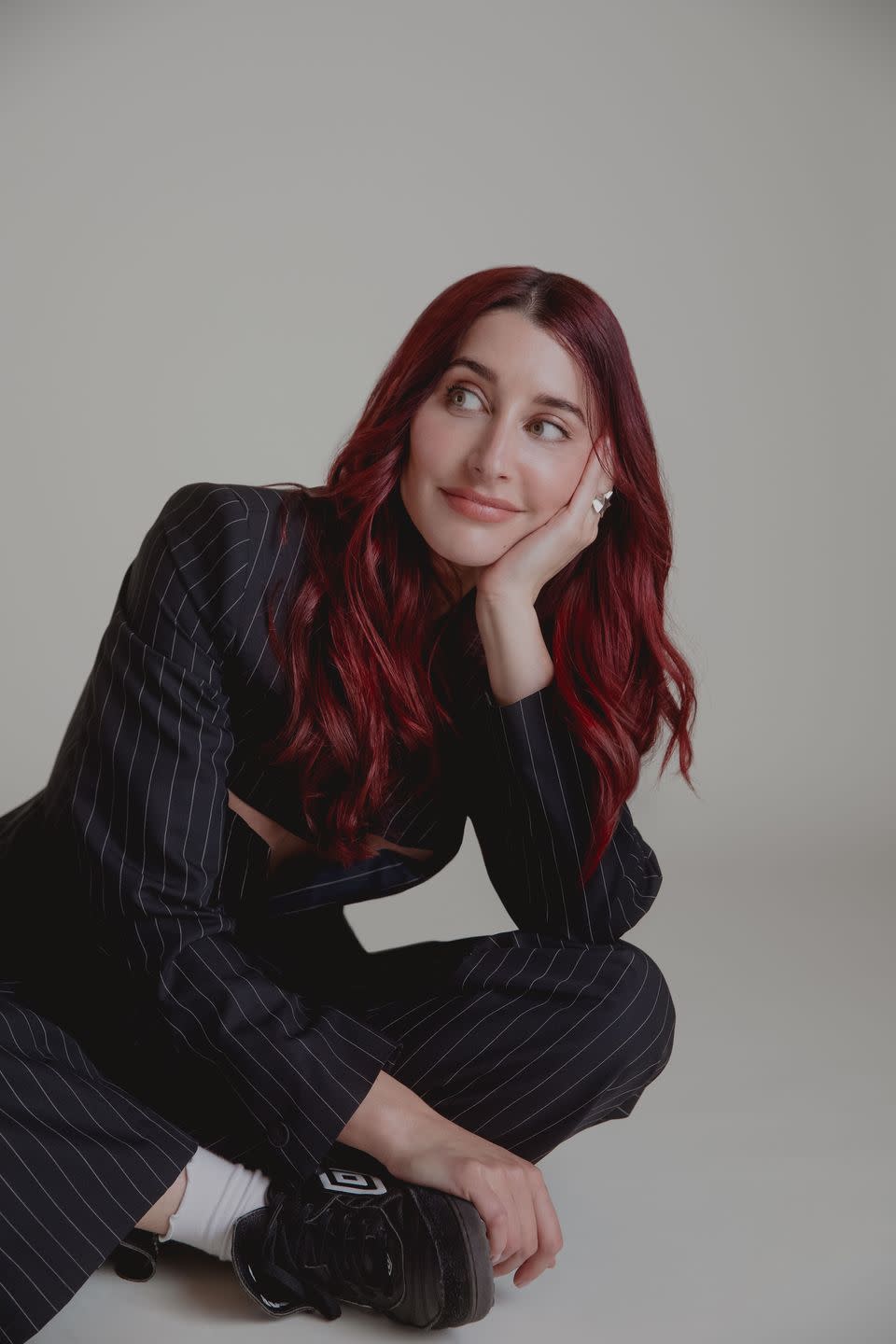
Two women’s hands extend toward each other, gripping the treasure on the shelf they both covet. We’ve seen this trope before, but this time, the women aren’t sparring over a Manolo Blahnik, but rather a Julie-brand morning-after pill in colorful packaging. In the commercial, written and directed by comedian Esther Povitsky, the strangers engage in the opposite of one-upmanship (one-downmanship?) to prove who needs it more. “My boyfriend has a podcast about crypto,” one laments.
You’ve probably never seen a pharmaceutical ad like this—which is exactly why the brand wanted to make it. “Why can’t an ad sound like the group chat? Why does it have to go through the pharma filter of seriousness?” asks Julie co-founder Julie Schott. Amanda E/J Morrison, another co-founder, tells me that when they first took the script to their compliance team, they were told, “‘That’s not how a pharmaceutical commercial goes.’ And I was like, ‘Well, show me the language where the FDA says that.’ The reality is, that language didn’t exist. It was just, everybody was doing what everybody thought they were supposed to do.”
“There’s a way to laugh your way in,” Morrison says of the brand’s approach. That could mean anything from selling merch (a “Dump Him”–style baby tee that reads “Sex Happens”) to billboards with slogans like “When you’re not ready to be a mommy influencer.” When asked to distill the Julie sense of humor, Schott says, “Go on TikTok. Everyone’s hilarious. I don’t want to make it about generations, but millennials are so self-serious, and like, ‘Story time, this is what happened.’ And that’s not it.”
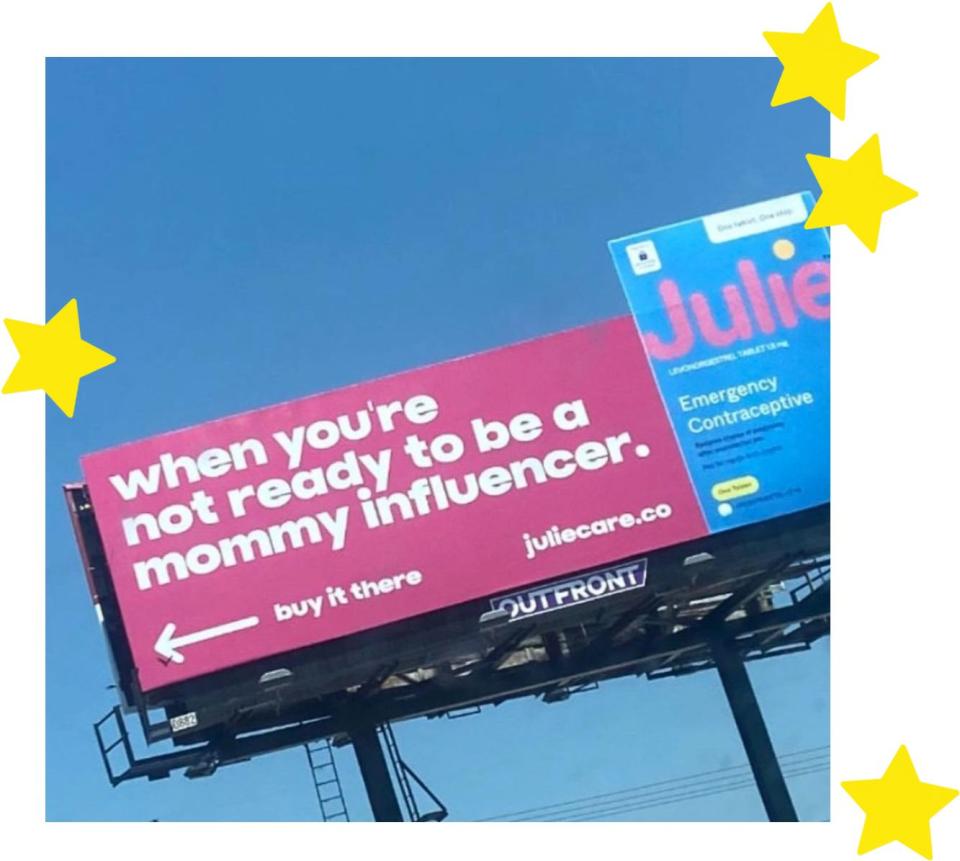
Though Schott herself is a millennial, her sensibility feels more Gen Z in a way that’s far from “How do you do, fellow kids?” territory. As a teen transplanted from the UK to Westport, Connecticut, she struggled in school and sometimes felt like an outsider. She has said she was body-shamed and slut-shamed by classmates. There’s a saying that famous people are frozen at the age they became famous, but maybe we’re all, to an extent, frozen at the age when people made us feel the smallest.
Schott held on to that feeling, and she had a genetic gravitation toward writing. (Her mother is a copy editor, and her older brother is a reporter.) After college at Pratt and a year at a PR agency, she became a beauty editor, working at xoJane, which specialized in “It Happened to Me” first-person essays. In the confessional-happy world of the 2010s internet, with commenters circling like bees around a hive, she found her métier. At the time, she felt self-conscious about being a beauty editor with acne-prone skin. “And so I started writing about that,” she says, “and it connected with a lot of people, because 95 percent of [teens and young adults] have acne. And it made me feel better to just talk about it. I didn’t feel so alone.”
That would be a galvanizing realization for Schott. In various forms, turning shame on its head has been the project of much of her adult life. Sitting in a sunlit room of her L.A. home, her black hair dyed dark red and arranged in a topknot, she’s wearing a red-and-white-striped button-down that she’ll later jokingly liken to the American Girl doll Molly’s pajamas. Her tone is Daria-dry, but there’s an earnestness to everything she says. Especially when she tells me, “If there’s an open secret or there’s an elephant in the room, that’s the thing I want to talk about.”
After leaving her beauty editor career (which by that point had brought her to ELLE), she brought her first product to market in 2019: the Starface Hydro-Star, a cutesy star-shaped yellow pimple patch that eventually landed on prime Hollywood real estate—the faces of both Biebers. The placement was organic, she says, and her team thinks it came about because they sent product to singer Justine Skye, who shared with her friend Hailey, who shared with Justin; Hailey eventually DM’ed the brand. (Schott says her true metric of success, though, was when her father, a high school teacher, started getting “clout” after students discovered his daughter cofounded Starface.) The product is now a common sight on the faces of the youth of America: 200 Hydro-Stars were sold every minute over the last four years. Starface helped usher in an era of what is often called “acne positivity,” but Schott sees it more as neutrality. “Our generation grew up being told you have a ‘before and after,’ and until you get to the after, you’re ugly and flawed,” she says. “But what if it was actually okay to have acne, because that’s what happens to human skin sometimes, and so what?”
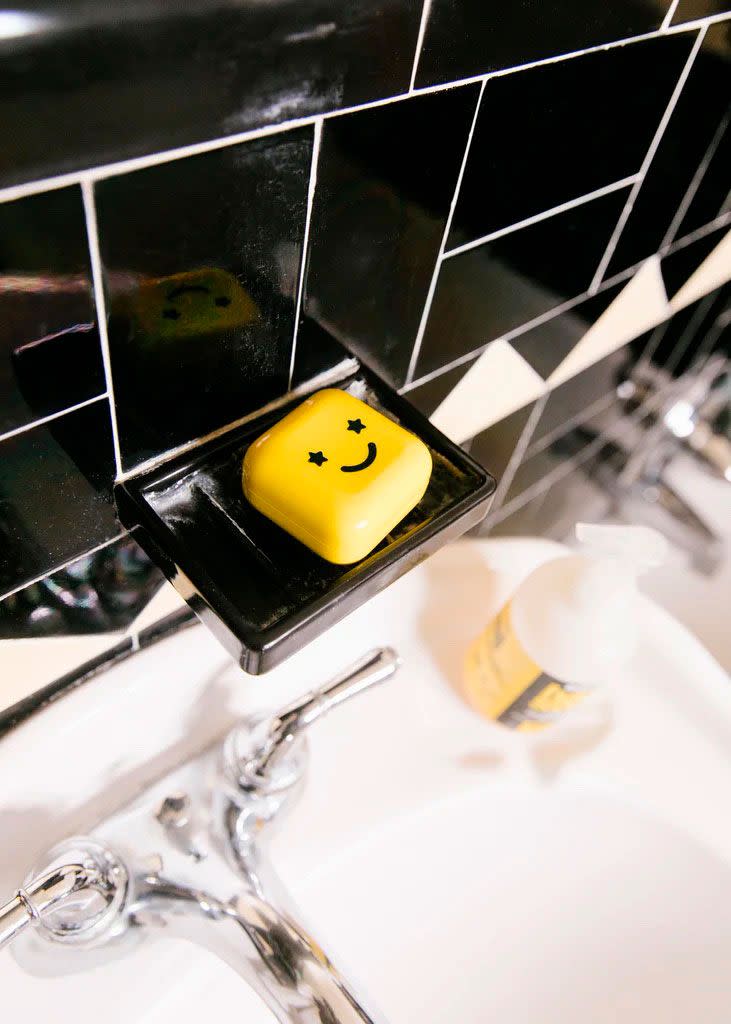
Starface “made having pimples cool, and even something to look forward to,” says Refinery29 beauty director and Gloss Angeles podcast co-host Sara Tan. Plenty of other brands approached acne positivity in what Tan sees as a “virtue signaling” way: “‘Celebrate your acne. But then again, here are all of these products that are going to make it go away.’”
Schott followed up her Starface and Julie success with Futurewise, a skin care line based on the trend of “slugging,” or adding an occlusive layer to lock in your moisturizer; and Blip, a smoking-cessation brand. Schott calls her process for identifying these gaps in the market “intuitive,” though they are also informed by data. When her team saw that young people were taking up cigarette smoking, they thought, “How can we make not smoking feel as hot as smoking?” (One thing that helps is seeding to celebrities; Doja Cat recently used a Blip toothpick at the Grammys.) All three brands are visually a 180 from the subdued neutrals of the millennial-marketing color palette. When Schott came on the scene, “There was this sense of influencer fatigue,” Tan says, “and everything looked exactly the same. That’s why I think she really was so smart to tap into the playfulness, the color, the humor—not taking yourself too seriously.”
“The unifying theme is, these are coming-of-age experiences,” Schott says. Perhaps because of her own adolescent tribulations, she’s obsessed with “that cusp moment, how that impacts the rest of your life.” By that metric, emergency contraception, or EC, wasn’t such a huge leap from her beauty-and-wellness-driven business. And while Julie was in development before the Supreme Court’s Dobbs decision two years ago this June, it’s taken on a whole new relevance in a post-Roe America, where both abortion pills and contraception are under threat, and where nearly half of all pregnancies are unintended.
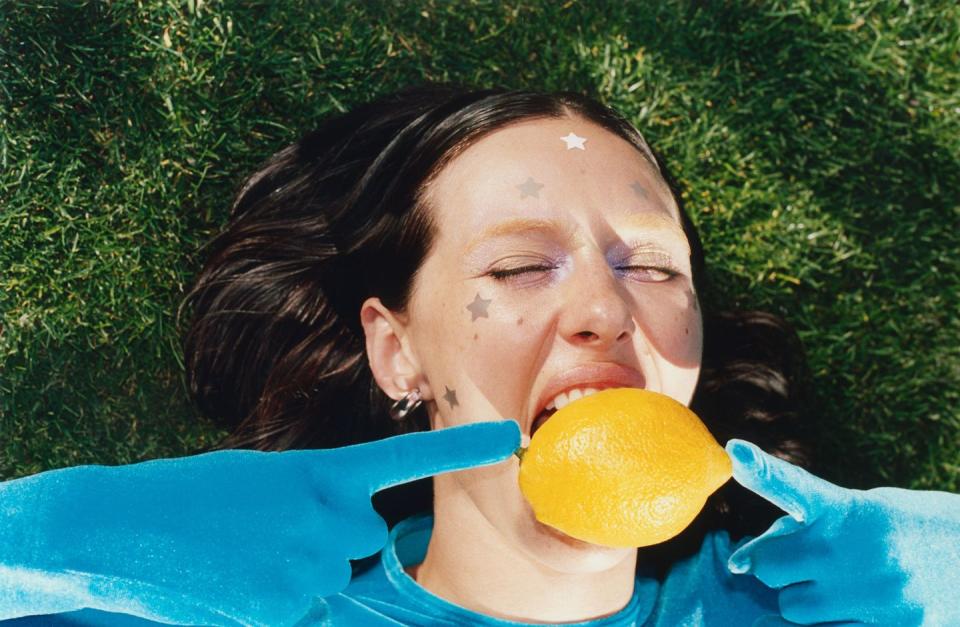
Early on, she and her co-founders convened focus groups of women ages 18 to 34, primarily in the South and Midwest. They learned, Schott says, that “people don’t really know that they have emergency contraception as an option, they don’t know where to get it, and they, above all else, do not know how it works.” (For the record, the Julie site states: “Julie is not an abortion pill and it will not harm or end an existing pregnancy. Julie helps prevent pregnancy by stopping or delaying ovulation.”) She sees it as a duty to break it down for young people, especially when it’s their first experience with the morning-after pill. “You don’t have to live through any of the shit that previous generations did,” she says, “we hope, or we believe.”

She is proud to tell people that Julie is available in all 50 states, in 13,000 outposts of easy-to-access chains like Walmart, Target, and CVS—a lifeline for the more than 19 million women living in “contraceptive deserts.” Through its one-for-one donation program, Julie for All, the brand has donated more than one million EC pills to women in need. Morrison tells me that they see themselves as a “content-first pharmaceutical company,” whether that means putting out educational videos or visiting college campuses, helping fill the gaps in the often-dire state of U.S. sex education. She notes that, growing up in the Bible Belt, “these things were just ‘inappropriate’ to talk about.…Everyone’s not starting on a level playing field with information and education,” especially in a country where only 18 states require sex education to be medically accurate.
A question she and her co-founders often ask themselves is, “How do we take women, particularly younger women, who feel othered, left out, and behind when it comes to health care, and put them in the front of their own story? How do we give them a community of other women who care about these things and are trying to figure it out? How do we give them a safe space to talk about these things, have products that are truly meant for them, and include them in the building of their own lives?” After all, she says, “Stigma is born and bred in the dark.”
That idea of helping women build their own lives was reinforced when the Julie team recently received an email from a college-age woman who was helped by another woman who purchased the pill for her in a time of need. “If it wasn’t for this woman who went and bought the product for her in this moment when she was breaking down, she could have had a kid, and her life trajectory could have been so different,” Morrison says. “Those heartwarming stories have helped fuel us internally as, frankly, we do this very difficult work, but also help us to share so that other people know they’re not alone.”
Just as pimple patches existed before Starface, emergency contraception existed before Julie. What Schott and her team did was make these things desirable, even cute. The winking ads, the yassified box, and even the approachable name are all part of that package.
After they brainstormed a host of names for the pill and learned they were all trademarked by sex toy companies, the third Julie co-founder, Brian Bordainick, suggested Julie, which had the cool-big-sister vibe of its namesake. (The connection is so seamless, Morrison confirms that Julie-the-person versus Julie-the-brand confusion does come up a lot in their office.) “What I love to see is women picking this up in the same way that they would choose something in the skin care aisle, because it should be that casual,” Schott tells me. “I get texts all the time from women I kind of know—friends of friends. They’ll send me a picture because they bought it, and there is not a hint of sadness. It’s just like, ‘Got this thing.’ They are feeling fine.”
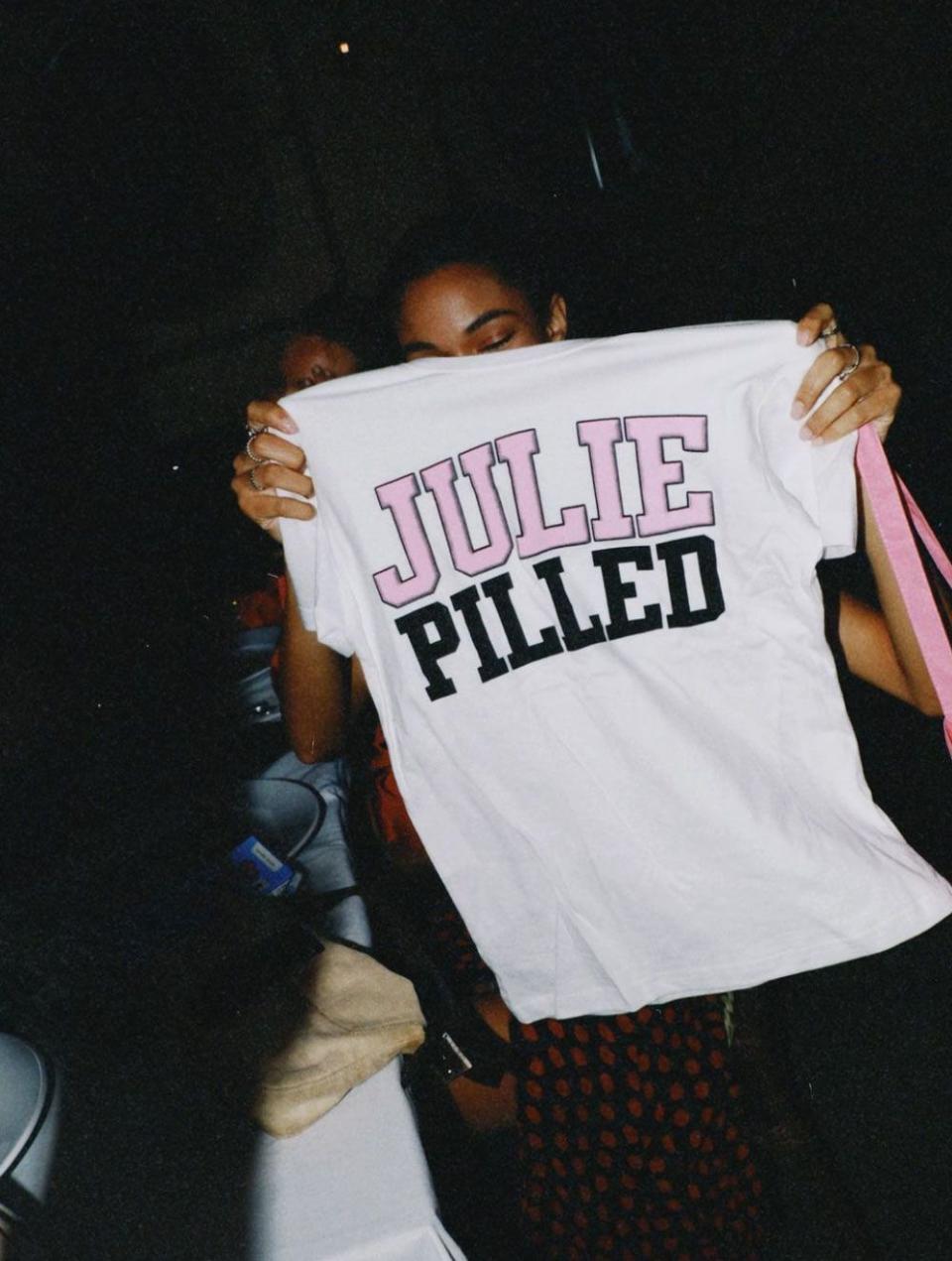
And Julie’s colloquial approach has real-world ripple effects. Raegan McDonald-Mosley, MD, CEO of the reproductive rights nonprofit Power to Decide, says that when her organization did research for Bedsider, its online birth control support network, young people “didn’t want the super-clinical, risk-focused, prevention-focused language. They wanted, ‘You had a good time last night; you need party-ready birth control.’…There was a randomized control trial showing that this approach—engaging people using language that’s accessible to them—can actually lead to behavior change and increased uptake of birth control.” She hopes that products like Julie can help create an environment “where someone walking into their pharmacy and getting condoms or emergency contraception is seen as, ‘That’s awesome. That’s so great that you’re taking care of yourself.’”
Which isn’t to say that some stigma doesn’t exist. Schott says that when they photographed model duo the Clermont Twins in scanty attire for the aforementioned “Sex Happens” T-shirt collaboration with the brand OGBFF, “Our [Facebook Ads] account got shut down and taken away, and it was never reestablished. We had to build an entirely new one—which I’ve never had happen in skin care.” And, she adds wryly, “for skin care, I’ve also shot someone naked in a shower several times.”
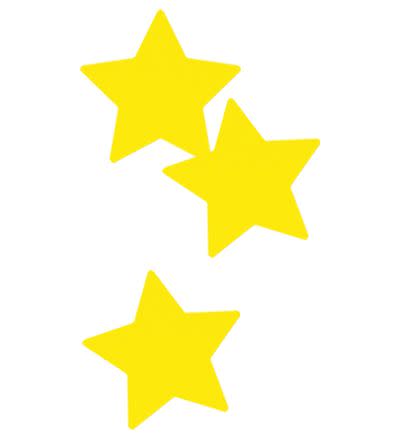
Recently, Julie got its own pop culture moment, with a side of controversy. A viral tweet showed the pill was being distributed as part of Olivia Rodrigo’s Guts Tour in St. Louis, after the singer partnered with Missouri Abortion Fund and Right By You. (The singer’s team asked local abortion funds to cease giving out EC at the subsequent shows in response to criticism that children were present.) “It’s always those organic moments that are that pivotal thing,” Schott tells me. “I never think you can orchestrate something like that, because that picture wasn’t orchestrated, that tweet, none of it. But it was one of the most impactful things in our short life.…It was huge for us, and all I saw on Twitter was positive commentary on her and her choice to do that. I saw people saying, ‘This generation of pop stars is doing so much more. This is what it looks like to actually take a risk.’ It’s very easy to say nothing, and she put herself out there. Yes, it got shut down, but it was super meaningful for someone who’s 21 or 22.” The idea that children shouldn’t be around EC, she adds, is “morality politics.”
Schott has been notably less front-facing than many other female founders of her generation: no panels, no pantsuits. She says she wants her brands to last for decades, “and to align them with one individual, like myself, narrows that option.” Instead, she prefers to cede the spotlight to animated mascots like Starface’s Big Yellow and Futurewise’s slug characters, whom she compares to the Zoloft blob; they star in winsome videos on the brand’s social channels. (Of the slugs, she says, “They’re always having these experiences that I think a lot of people can relate to, of being like, ‘I don’t even want a job. I just want to exist.’”) “Longevity-wise, I think it’s really smart of her to let the brands shine on their own and live on their own,” Tan says. “It makes it much more fun and accessible when you’re connecting with that slug.”
The Sanrio universe is a major inspiration of Schott’s. Starface’s first collaboration was with the company, and it later linked up with Sesame Street. “The power of connectivity with Elmo is so unrivaled. And how could I, as just a girl, ever be Elmo? That’s ridiculous,” Schott says. “I’m very introverted. My healthiest, best version of my life is being able to quietly and privately build these things with teams who are really smart.”
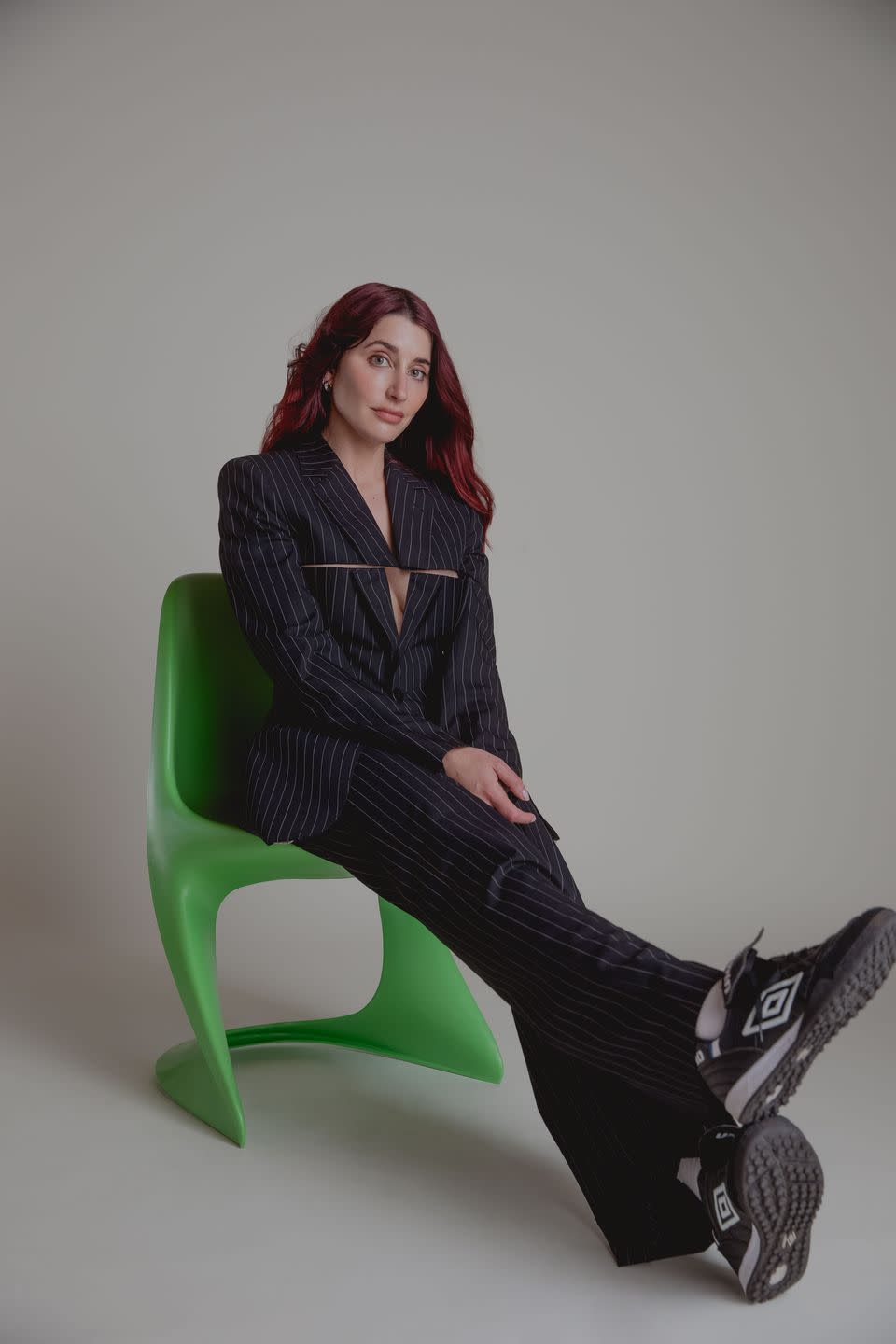
A through line in Schott’s career seems to be undoing some of the wrongs of the past, a kind of The Catcher in the Rye deflecting, as she would say, the “shit” that she went through for the next generation. Like most millennial women, she grew up saturated in diet culture, and it had lasting effects. “I think it was the last era where you could be like, ‘Here’s how to drop 10 pounds in 10 days,’ or ‘Follow my starvation diet.’ That was my entire twenties.”
She entered eating disorder recovery shortly after she launched Starface. “Sometimes I’m a little angry and disappointed that it took me 10 years to do it and that I missed my twenties, sort of putting my body through hell,” she says. “But the positive side of that is, it wasn’t just me. So I could still find connection with other people.”

Her former career as a beauty editor, she says, was “so granular. Like, you learn that your eyelids are sitting wrong.” There are two types of beauty editors, she theorizes: “The ones who can really separate themselves, and then there’s me, who is a full-on addict when I engage with it. So I think the only option for me was to completely disengage. And that’s why our approach is so separate from those ideals. Wearing stars all over your face is so counter to putting forward a face that’s palatable.”
Lately, her biggest challenge has been disconnecting from her phone—not an easy task for someone whose business depends on being very online (and who’s hired at least one employee based on their hilarious, gentle roasts in her Instagram comments). Recently, she and a friend, a fellow beauty founder, enrolled in a 72-hour digital detox program. After which, she jokes, “We were like, ‘We’re different now. We don’t use our phones.’ And then a week later, you’re back to nine hours of screen time.” Yet another way she’s one of us—and unafraid to admit it.
This article appears in the June/July 2024 issue of ELLE.
You Might Also Like

